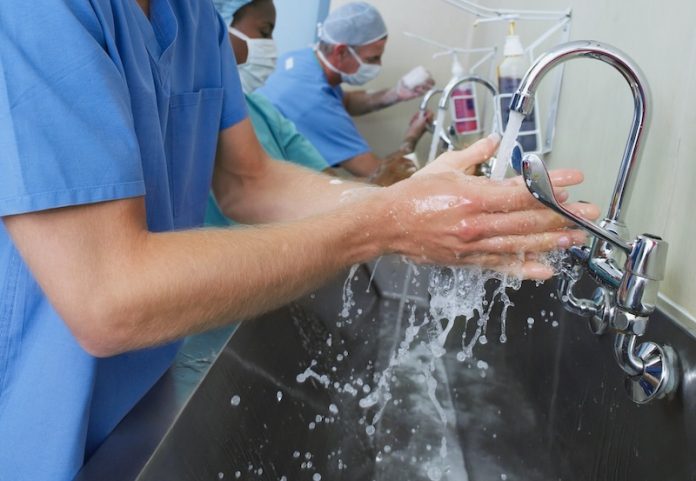
Hospitals are meant to heal, but they can also be places where patients pick up new infections. These “health-care-associated infections” (HAIs) are a growing concern worldwide. Hospitals must spend billions of dollars to manage them, and they lead to thousands of deaths each year.
In the European Union alone, HAIs affect more than 3.5 million people annually, costing up to €24 billion and contributing to 90,000 deaths. In the U.S., they are the sixth leading cause of death.
HAIs spread easily in hospitals, especially among patients with weak immune systems. Poor hygiene in some hospitals and the widespread use of antibiotics create ideal conditions for bacteria to survive and evolve.
When bacteria develop resistance to antibiotics, they become even harder to treat. Some bacteria can even transfer their resistance genes to other species, making the problem worse.
A recent study led by Dr. Margarita Gomila from the University of the Balearic Islands found that hospital sink drains may be a hidden source of dangerous bacteria. The study, published in Frontiers in Microbiology, showed that even with strict cleaning measures, hospital drains still contain bacteria that can survive, change over time, and spread.
Tracking Bacteria in Hospital Drains
The research took place in a modern university hospital on the island of Majorca. Built in 2001, the hospital follows strict hygiene procedures. Sinks and drains are cleaned regularly with bleach and disinfectants. High-pressure steam is used every two weeks in patient areas and every month in other areas. Once a year, pipes are treated with chlorine to kill bacteria.
Between February 2022 and February 2023, researchers collected bacterial samples from 30 sink drains across five hospital wards. These included two intensive care units (one newly built), a hematology ward, a general medicine ward, a short-stay ward, and a microbiology lab.
The team identified bacteria from 1,058 samples using DNA analysis and mass spectrometry. They also tested 219 samples for antibiotic resistance.
The results were concerning. Researchers found 67 different bacterial species in the hospital drains. The diversity of bacteria changed unpredictably over time, with no clear seasonal pattern. Surprisingly, the newly opened intensive care unit already had a high level of bacterial diversity, similar to the older unit.
Among the most common bacteria were six Stenotrophomonas species and Pseudomonas aeruginosa. The World Health Organization (WHO) considers P. aeruginosa one of the most dangerous antibiotic-resistant bacteria, as it can cause deadly infections like pneumonia and sepsis.
The researchers also found other harmful bacteria such as Klebsiella pneumoniae, Acinetobacter, Enterobacter, and Staphylococcus aureus—all of which are known to cause serious infections in hospital settings.
Bacteria Becoming Resistant to Antibiotics
Many of the bacteria found in the study belong to a dangerous group called ESKAPE pathogens—bacteria that are highly resistant to antibiotics and frequently cause hospital infections.
- About 21% of P. aeruginosa samples were resistant to at least one type of antibiotic.
- Some Klebsiella and Enterobacter strains were resistant to third-generation cephalosporins, a class of antibiotics commonly used to treat severe infections.
- Fortunately, most bacteria in this study were still treatable with carbapenems, one of the strongest types of antibiotics. However, a few P. aeruginosa strains carried the blaVIM gene, which makes bacteria resistant even to carbapenems. This was found in the intensive care, general medicine, and short-stay wards.
Why This Matters
This study confirms that hospital sink drains can act as hidden reservoirs of dangerous bacteria. Even with strict cleaning protocols, bacteria survive and spread, potentially putting patients at risk. The researchers suggest that hospitals should not only focus on cleaning but also study where these bacteria come from and how they move within hospital environments.
“Cleaning protocols are important and should be done frequently, especially in areas that are kept separate to prevent bacteria from spreading,” said José Laço, a Ph.D. student and first author of the study. “But to really solve this problem, we need to understand how these bacteria enter the hospital and how they are transmitted.”
These findings highlight the need for better infection control measures. If hospitals can stop bacteria from settling in drains in the first place, they may be able to reduce the risk of hospital-acquired infections and protect vulnerable patients.
For more information about cancer, please see recent studies that plant-based diets may reduce risk of colorectal cancer in men, and Low-fat diet may help stop cancer growth.
For more information about cancer, please see recent studies about How to harness the power of anti-cancer foods and supplements and results showing that Empower your plate: cancer-fighting foods and recipes.
The research findings can be found in Frontiers in Microbiology.
Copyright © 2025 Knowridge Science Report. All rights reserved.



